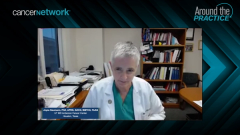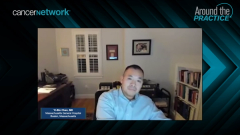
Proactive Approaches to Preventing and Managing Chronic GVHD
Resources that can help educate patients and community physicians about the risk for chronic graft-vs-host disease post-transplantation.
Episodes in this series

Parameswaran Hari, MD, MRCP: Let’s talk about something that’s very close to Joyce’s heart. What are the best practices in patient education? How do you transition patients who are no longer at the main transplant center? They’re being cared for either in a joint fashion with the community setting or they’re exclusively living in a different location from the transplant center. What are the best practices around patient education and community education around chronic GVHD [graft-vs-host-disease]?
Joyce Neumann, PhD, APRN, AOCN, BMTCN, FAAN: There are a lot of resources there. As I mentioned before, we have a long-term follow-up or survivorship program that educates. We start it before the patient even leaves our transplant center with about an hour-long session on healthy living and the signs and symptoms and assessment of GVHD at that juncture so that we have a baseline of where they’re at when they leave our center. That’s also true with the requirements for CIBMTR [Center for International Blood and Marrow Transplant Research], one of our organizations, in terms of assessing patients at 3 months, 6 months, 12 months, and then 18 months and annually.
We also make sure that there’s a packet or some information. We certainly understand that a community provider doesn’t have time to read through all of the patient’s history and the graft-vs-host information, but we try to highlight some of the key factors. One of the other factors is to let them know that we have research programs at all of our centers, and so it may be important to contact our researchers that are doing those studies on GVHD. It’s essential to make sure those contacts with the transplant center and the community provider are very strong, with very good communication between the 2.
We give our patients a packet for themselves and their caregivers with the signs of chronic GVHD—even those subtle signs we mentioned, like how things may initially appear sometimes as difficulty with opening a jar, buttoning clothes, or doing something that involves some dexterity and range of motion in their joints. There’s also the dryness in the eyes and some of the things that can start very subtly but can advance to decreased quality of life and life-threatening complications.
There are other resources that we give patients. The NMDP [National Marrow Donor Program] has some great resources for patients and providers about the signs of GVHD, along with our professional organization, ASBMT [American Society for Blood and Marrow Transplantation]. TCT [Transplantation & Cellular Therapy Meetings] has some great resources. It’s important to provide them with where you can find the information, have open communication with the transplant center, and increase awareness of the signs and symptoms that they may be looking for.
Transcript edited for clarity.
Newsletter
Stay up to date on recent advances in the multidisciplinary approach to cancer.


















































































